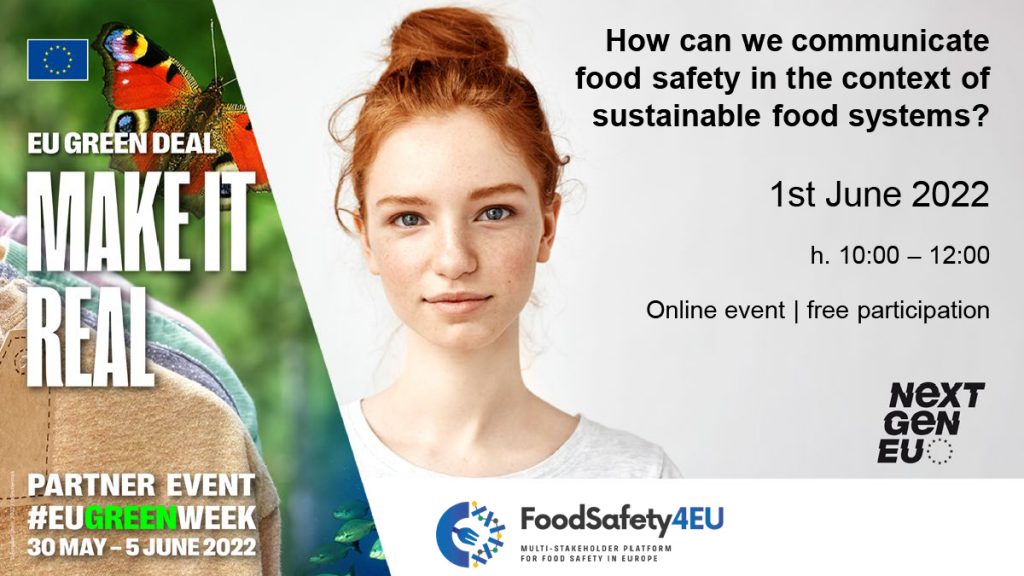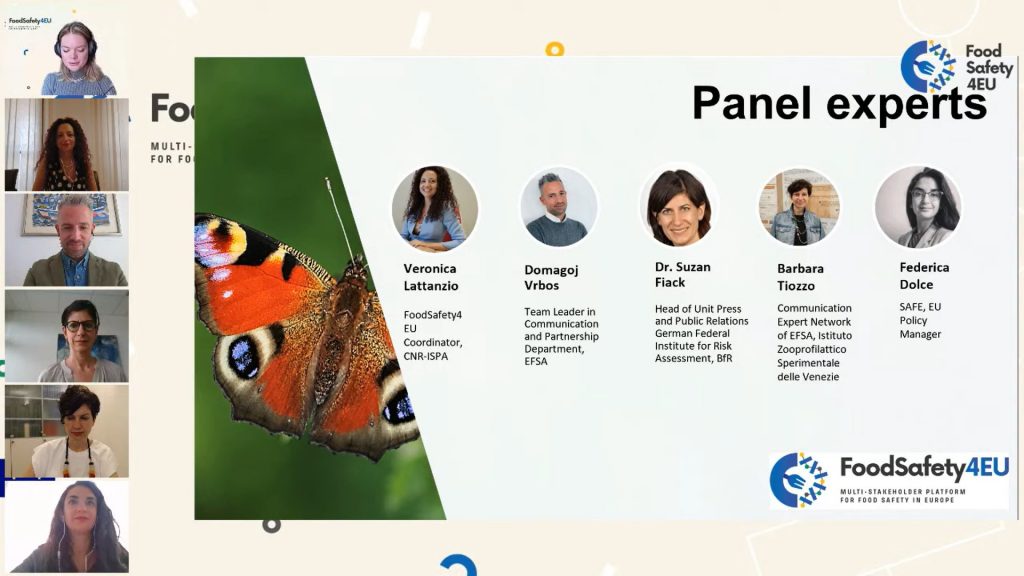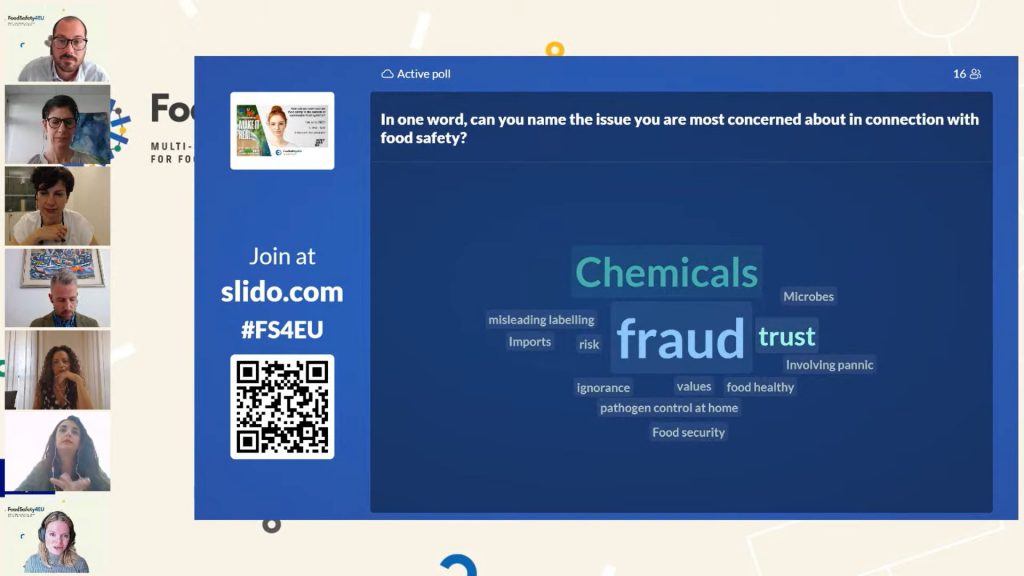
The EU policy agenda, particularly “Farm to Fork” strategy in the framework of the EU Green Deal, has placed significant importance on the transition towards more sustainable food systems and healthy diets, maintaining a consistently high level of food safety that should be communicated to and understood by consumers.
Joining the efforts to improve food safety across Europe, on June 1st, the FoodSafety4EU project held the online EU Green Week Partner Event, gathering Food Safety System actors from all over Europe to discuss how to improve food safety communication. The workshop brought together experts representing different actors and perspectives, in an open discussion on effective communication practices, as well as the impact of emerging risks in the food chain and the incorporation of the EU Green Deal priorities, in terms of communication.
Maria Scherbov and Matteo Sabini from the European Food Information Council (EUFIC), moderated the participatory learning session, encouraging attendees to interact in a very dynamic way, to ask questions and to share their perceptions in contrast to those of the experts

The experts Veronica Lattanzio from FoodSafety4EU, Domagoj Vrbos from the European Food Safety Authority (EFSA), Barbara Tiozzo from the Istituto Zooprofilattico Sperimentale delle Venezie (IZSVe), Dr. Suzan Fiack from the German Federal Institute for Risk Assessment (BfR), and Federica Dolce from the Safe Food Advocacy Europe (SAFE) introduced how they communicate food safety, followed by a discussion on their experiences of effective communication practices.
Effective communication practices
In the stimulating discussion on effective communication practices, all panellists highlighted the importance of identifying target audiences and tailoring communication to specific groups. Among the examples mentioned, EFSA highlighted their campaigns on African Swine Fever and the EU Choose Safe Food, where they pre-tested the tone of their communication and implemented the use of visuals. While SAFE highlighted that the success of their campaign in Japan, on the use of food additives in food, was determined by its success in bringing together the interests of consumers and policy makers.
Before moving on to the next topic, a discussion was opened with the audience, who agreed that the key elements of a campaign are the right channel, knowing the audience and stressed the importance of a simple message. Concerning the ease of reaching consumers or policy makers, SAFE stressed that it depends on the message and if the topic is known and concrete.

Comprehensive communication: emerging risks in the food chain
In terms of emerging risks in the food chain, FoodSafety4EU highlighted that one of the challenges they have faced in communicating them to the public has been that food safety is not a trending topic, leading them to change their communication strategies, and on the other hand, noticing the interest of consumers in the policy making process, where unfortunately the lack of a single approach leaves them out. Despite the challenges, EFSA mentioned that COVID has been a key point in raising public awareness, increasing public interest in foodborne diseases and issues such as zoonoses and monkeypox.
IZSVe underlined that the real challenge is trust, which was later, in discussion with the audience, also identified as a problem and challenge connected to food safety, as well as the presence of chemicals. In relation to how to address these challenges, the audience responded that through scientific collaboration, education of children, competent authorities, and continuous communication.
Conclusion
Finally, talking about the EU Green Deal priorities, all panellists agreed that they have been the basis of their communication, either explicitly in campaigns, in communication strategies or as a topic.
In case you missed it, you can stream the whole event here and keep an eye out for upcoming events that we will be organizing at regional level.